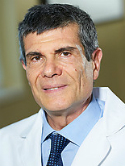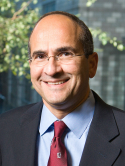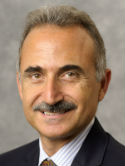Breast reconstruction and adiotherapy Book Section
| Authors: | Voineskos, S. H.; Coroneos, C. J.; Cordeiro, P. G. |
| Editors: | Urban, C.; Rietjens, M.; El-Tamer, M.; Sacchini, V. S. |
| Article/Chapter Title: | Breast reconstruction and adiotherapy |
| Abstract: | In the setting of radiotherapy, plastic surgeons are faced with the challenge of performing breast reconstruction in two main groups of patients: those who will undergo reconstruction before radiotherapy and those who have their reconstruction in a previously irradiated field. Delaying breast reconstruction, until pathology results establish the need for radiotherapy, denies patients the aesthetic and psychological benefits of immediate reconstruction. If radiation is anticipated, we advocate immediate two-stage prosthetic reconstruction; this provides the patient with a breast mound and still maintains the option of salvage reconstruction with a flap. Given the difficulty of creating a soft, symmetrical breast when a flap is radiated, we suggest avoiding immediate autologous breast reconstruction in patients that might require postmastectomy radiotherapy. In patients who have been previously irradiated, delayed tissue expansion is often problematic and seldom successful. It is only indicated in a select group of patients or requires recruitment of healthy, non-irradiated tissue, in the form of a latissimus dorsi flap. Conversely, delayed autologous tissue reconstruction affords the opportunity to achieve a natural-appearing, ptotic breast. In delayed free-flap reconstruction, it is unclear whether prior radiotherapy directly impacts vascular complication rates. Nipple-areolar complex reconstruction is a safe procedure in autologous reconstruction but should be approached with caution when performed over an underlying implant. Regardless of the timing of administration, radiotherapy creates a challenging environment to reconstruct a natural feeling and appearing breast mound using either alloplastic or autologous methods. Patients should be advised that complication rates will be higher, and their cosmetic outcome will likely be inferior when compared to women who do not require radiotherapy. © Springer International Publishing AG, part of Springer Nature 2013, 2019 |
| Book Title: | Oncoplastic and Reconstructive Breast Surgery. 2nd ed |
| ISBN: | 978-3-319-62925-4 |
| Publisher: | Springer |
| Publication Place: | Cham, Switzerland |
| Date Published: | 2019-01-01 |
| Start Page: | 709 |
| End Page: | 721 |
| Language: | English |
| DOI: | 10.1007/978-3-319-62927-8_59 |
| PROVIDER: | scopus |
| DOI/URL: | |
| Notes: | Book chapter: 59 -- This chapter can be found under "Part VII Breast Reconstruction in Special Populations" -- Source: Scopus |
Altmetric
Citation Impact
BMJ Impact Analytics
Related MSK Work





